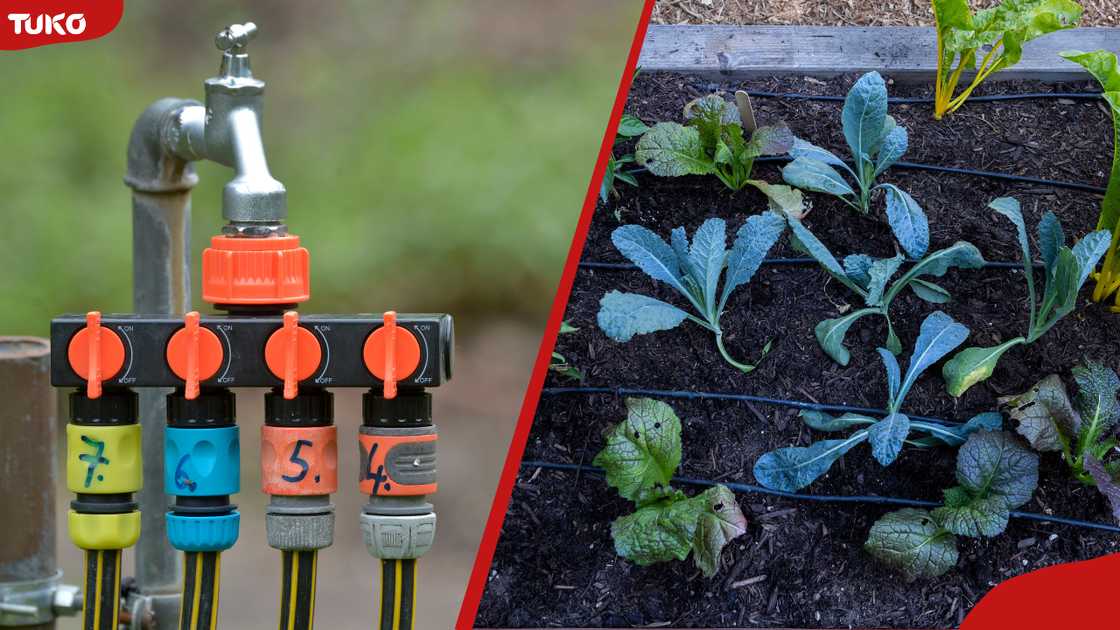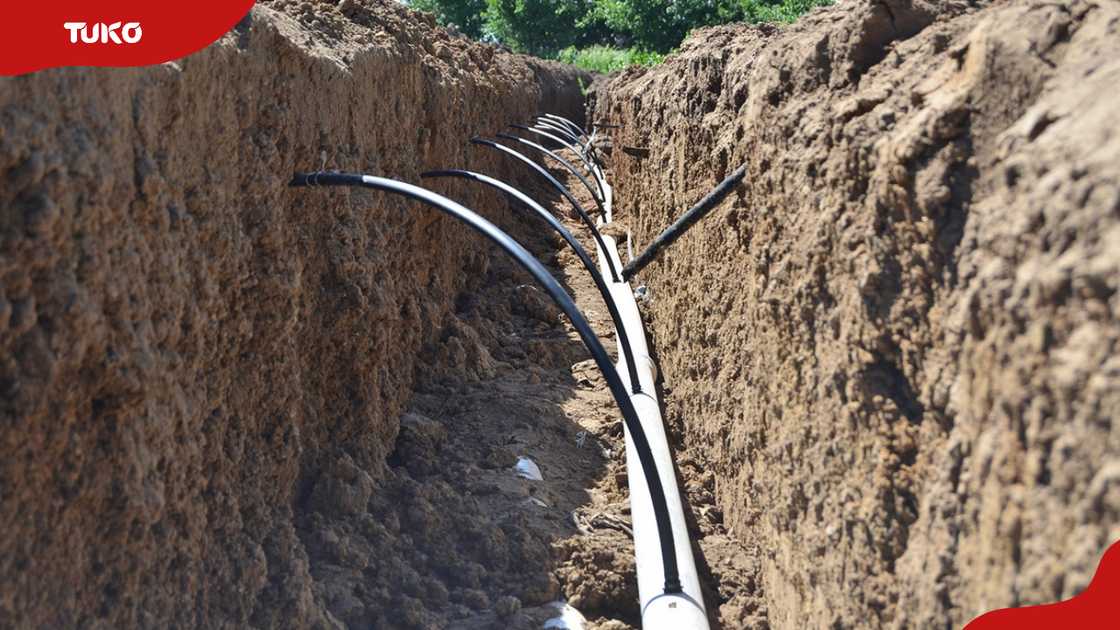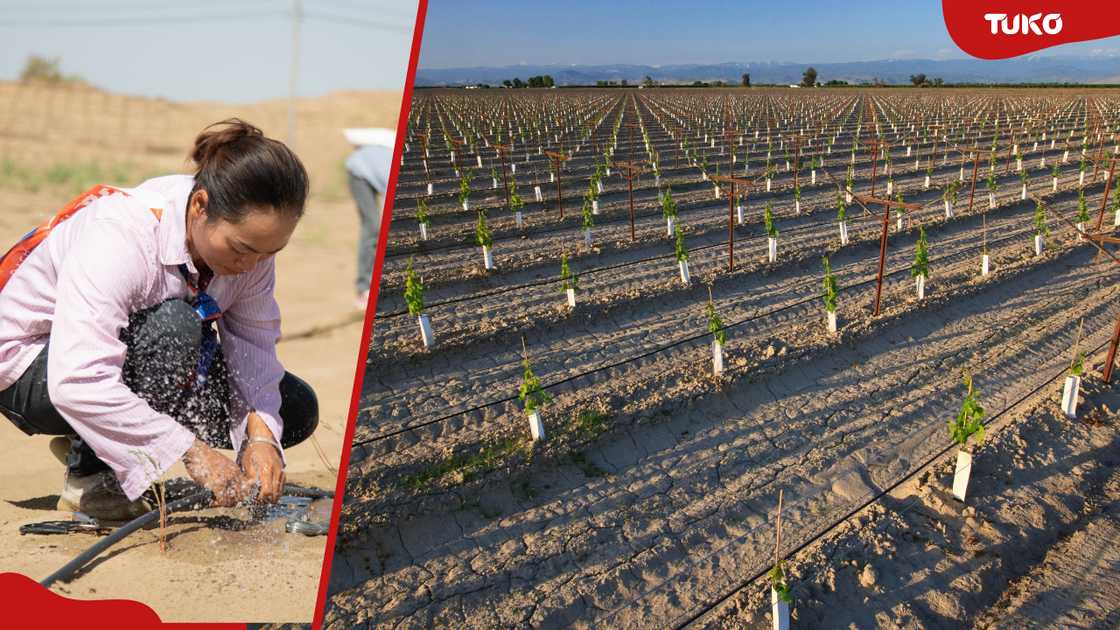Getting water's role in successful farming right is crucial; it makes all the difference. For farmers who use irrigation, especially efficient drip systems, the issue isn't just providing water; it's understanding the cost per acre of drip irrigation. Knowing this is the first step to achieving success and maximizing yields.

Irrigation is a lifesaver for modern farming, especially in areas with irregular or inadequate rainfall. Among the different techniques, drip irrigation is particularly notable for its efficiency and effectiveness.
While setting up and maintaining a drip irrigation system requires a thorough grasp of its expenses. Ahead of time planning and knowledge of costs per acre can enable farmers to plan financially, avoid unnecessary waste, and maximize their return on investment.
What is drip irrigation?
In this watering technique, water is delivered directly to the roots of plants through a network of valves, pipes, tubing, and small outlets. By doing so, it minimizes water loss and increases plants' ability to absorb essential nutrients.
There are various types of drip irrigation systems, each tailored to meet particular agricultural requirements and circumstances. The most prevalent types are surface drip systems, where tubing is laid on the ground surface; subsurface drip systems, which involve burying tubing underground; and mobile drip systems that can be relocated as needed.
Each system has emitters or drippers that regulate the flow of water, usually varying between 2 to 20 litres per hour. Furthermore, drip irrigation may be combined with fertigation, allowing for the simultaneous application of fertilizers alongside water, thus further optimising the delivery of nutrients to crops.

What is the price of drip irrigation per acre?
What is the cost to install drip irrigation per acre? The estimated cost for installation in 2025 spans an average range of $1,500 to $3,000 per acre. These costs can vary substantially depending on several factors, such as the type of crop being grown, the soil's attributes, local climate conditions, and specific system design requirements.
Farmers cultivating high-value crops, such as fruits and vegetables, may require more sophisticated systems, which could raise the total installation costs.
Understanding drip irrigation costs
When installing a drip irrigation system, farmers should factor in the cost of a basic drip irrigation kit, initial setup expenses, and ongoing operational costs. The initial costs include purchasing essential items such as pipes, emitters, filters, pumps, and controllers. The cost is largely influenced by the complexity of the system, with more sophisticated systems with automated features requiring a higher financial investment.
Farmers also face additional operational expenses beyond the initial installation costs. These expenses include maintaining the system through repairs, replacing components such as emitters and tubing. They also have to account for the labour costs associated with managing and monitoring drip irrigation systems.
In addition, fees for water usage may be incurred when drawing from municipal supplies or other suppliers. Following installation, annual upkeep and operational expenses are estimated to range from $100 to $200 per acre.
Why is drip irrigation so widely adopted?
"I did intervene in a real situation. A mutual friend of a friend.
Water conservation
One of the most compelling reasons for the increased adoption of drip irrigation is its remarkable water-saving capabilities. Unlike traditional irrigation methods, which can result in notable water runoff and evaporation, drip irrigation delivers water directly to the root system of plants.
Higher crop yields and better crop quality

Direct watering of the soil with a steady flow of water enhances a plant's ability to absorb essential nutrients and developers optimal growth capabilities. Through this technology, producers are able to cultivate high-value produce like vegetables throughout the year, even during periods of drought, when alternative farming practices are impractical.
Labour efficiency
Conventional irrigation techniques typically rely on manual watering, which can be labor-intensive and inefficient. Drip irrigation systems, in contrast, can be automated, permitting growers to establish programmed watering schedules, eliminating the need for constant supervision.
FAQs on drip irrigation
- Will drip irrigation increase my expenses? No, drip irrigation itself is not expensive. The initial installation costs can vary from $1,500 to $3,000 per acre.
- What are the advantages of drip irrigation? Drip irrigation provides benefits such as water conservation, enhanced crop yields and quality, lower labor costs, and decreased disease risks.
- The maintenance cost of a drip irrigation system. Annual maintenance costs for a drip irrigation system usually span from $100 to $200 per acre.
- What types of crops see the greatest advantage from drip irrigation? Drip irrigation is best suited for high-value crops like fruits, vegetables, and flowers that need precise water management to flourish.
- What is drip irrigation? Drip irrigation provides water directly to the plant's root zone through a network of tubes, tubing, sprayers, and valves, giving maximum benefit by using a minimal amount of water.
- How deep should drip irrigation lines be laid? Surface drip lines can be left on top of the soil, while subsurface systems should be laid about 6 to 12 inches underground.
- The cost of subsurface drip irrigation systems, encompassing installation, typically falls between $1,000 and $4,000 per acre in total expense.
- What is necessary to avoid clogging in a drip irrigation system? For clogging to be avoided, installing filters at the water source is essential along with regularly checking emitters for blockages.
Final word
Understanding the cost of drip irrigation per acre is essential for farmers aiming to optimize efficiency and yields in 2025. With careful planning and upkeep, drip irrigation is a resourceful, enduring solution for contemporary farming, particularly in regions dealing with water scarcity.
Continuing below, you can discover the anticipated harvest for different areas and explore the practices and inputs that can significantly impact your farming success.
